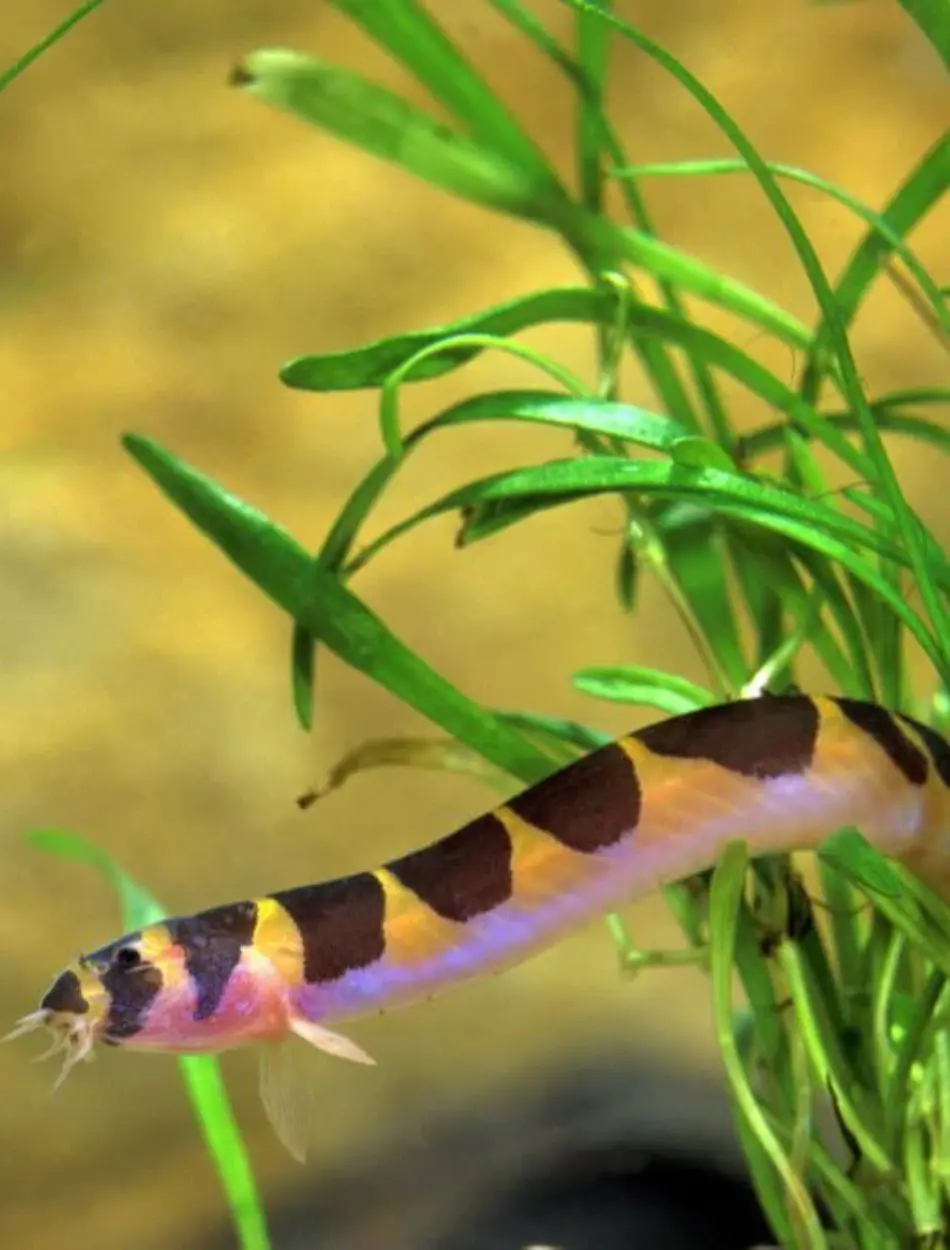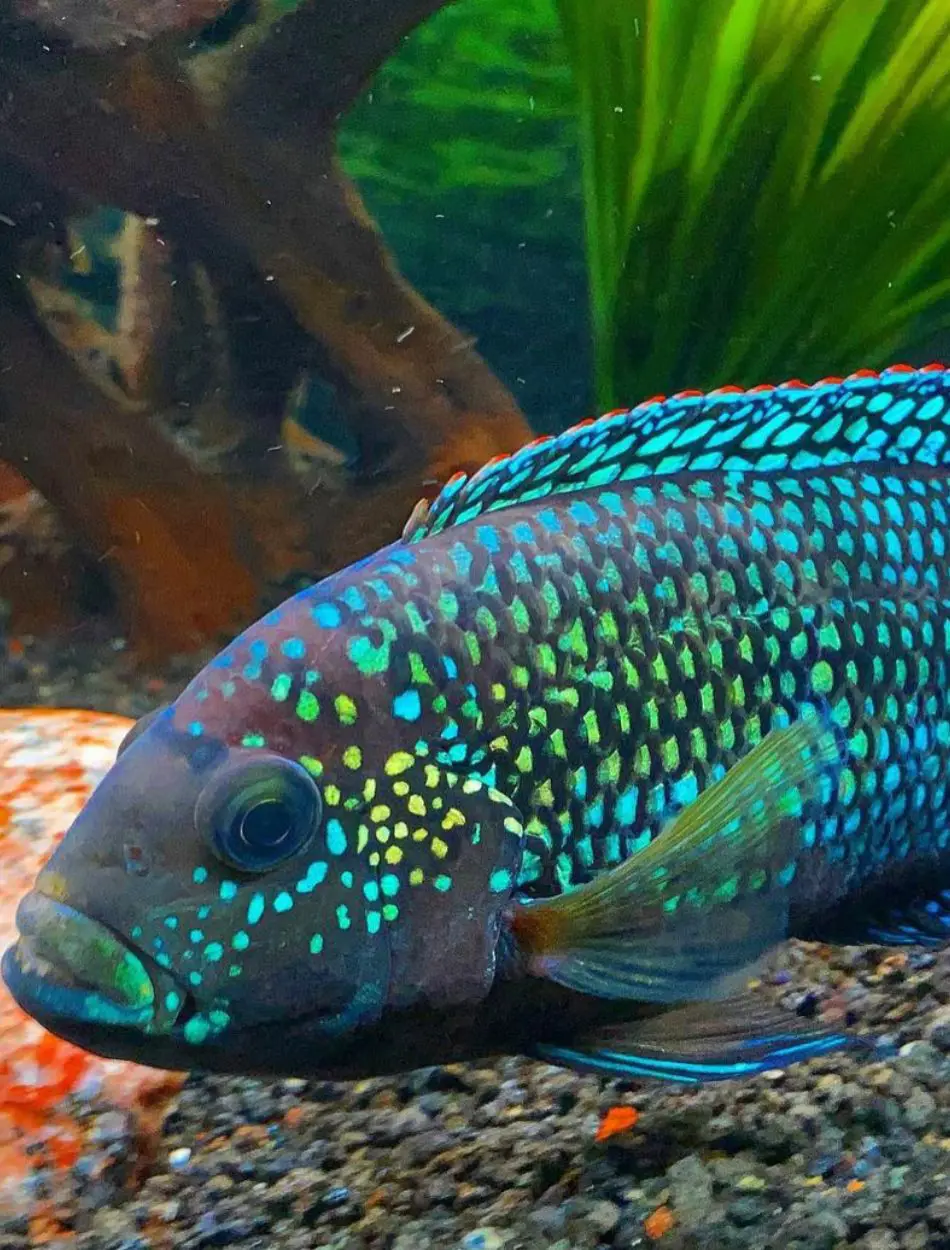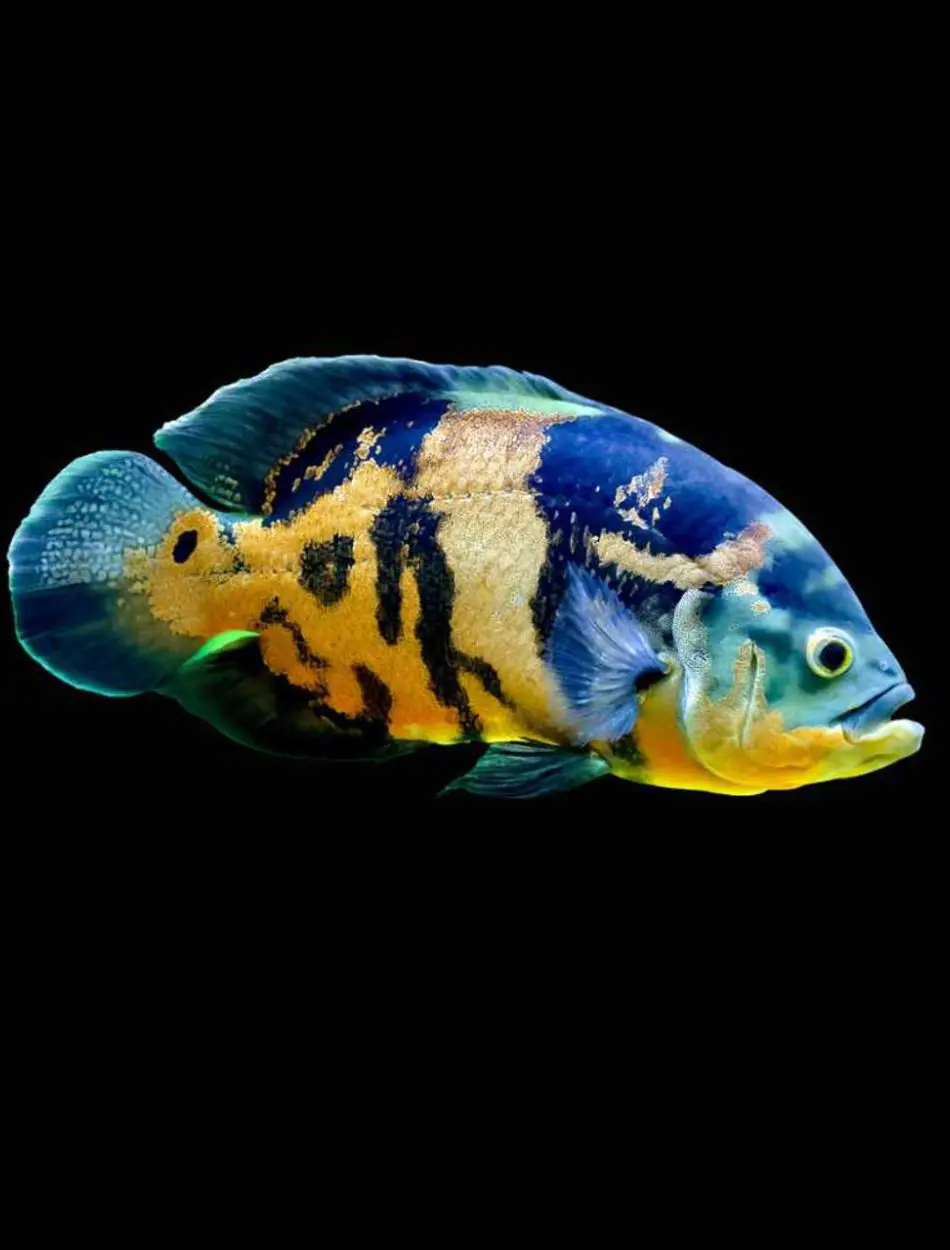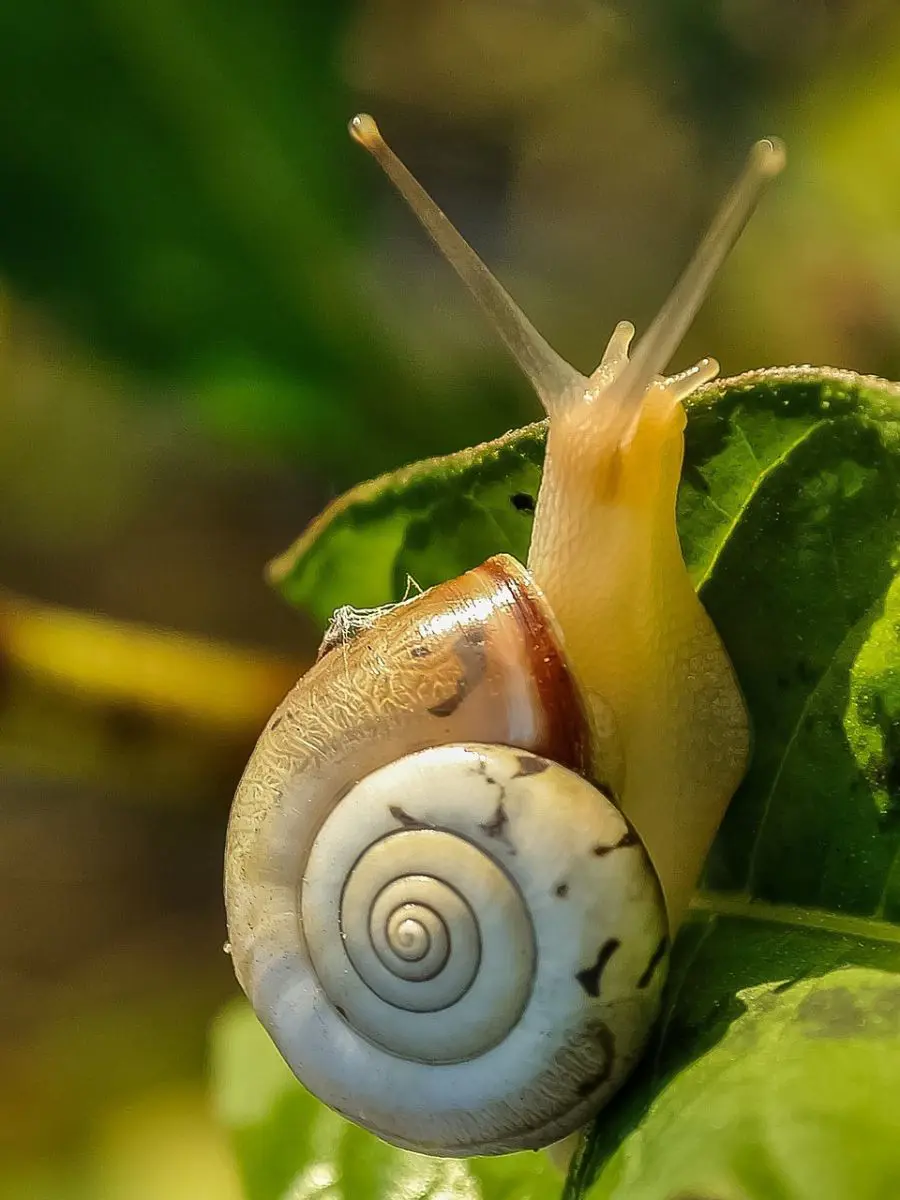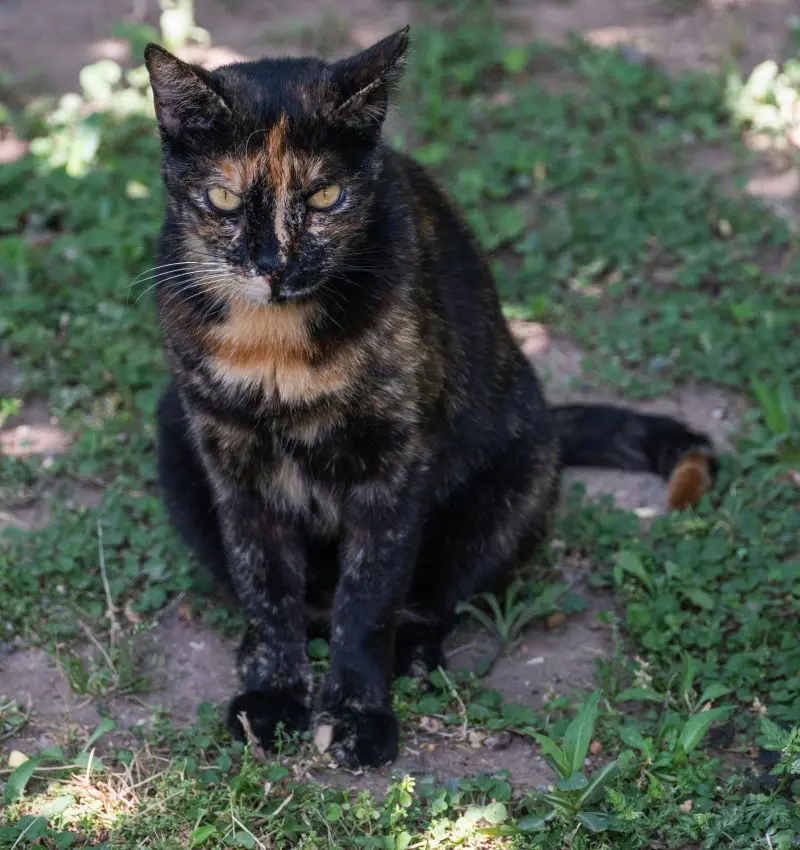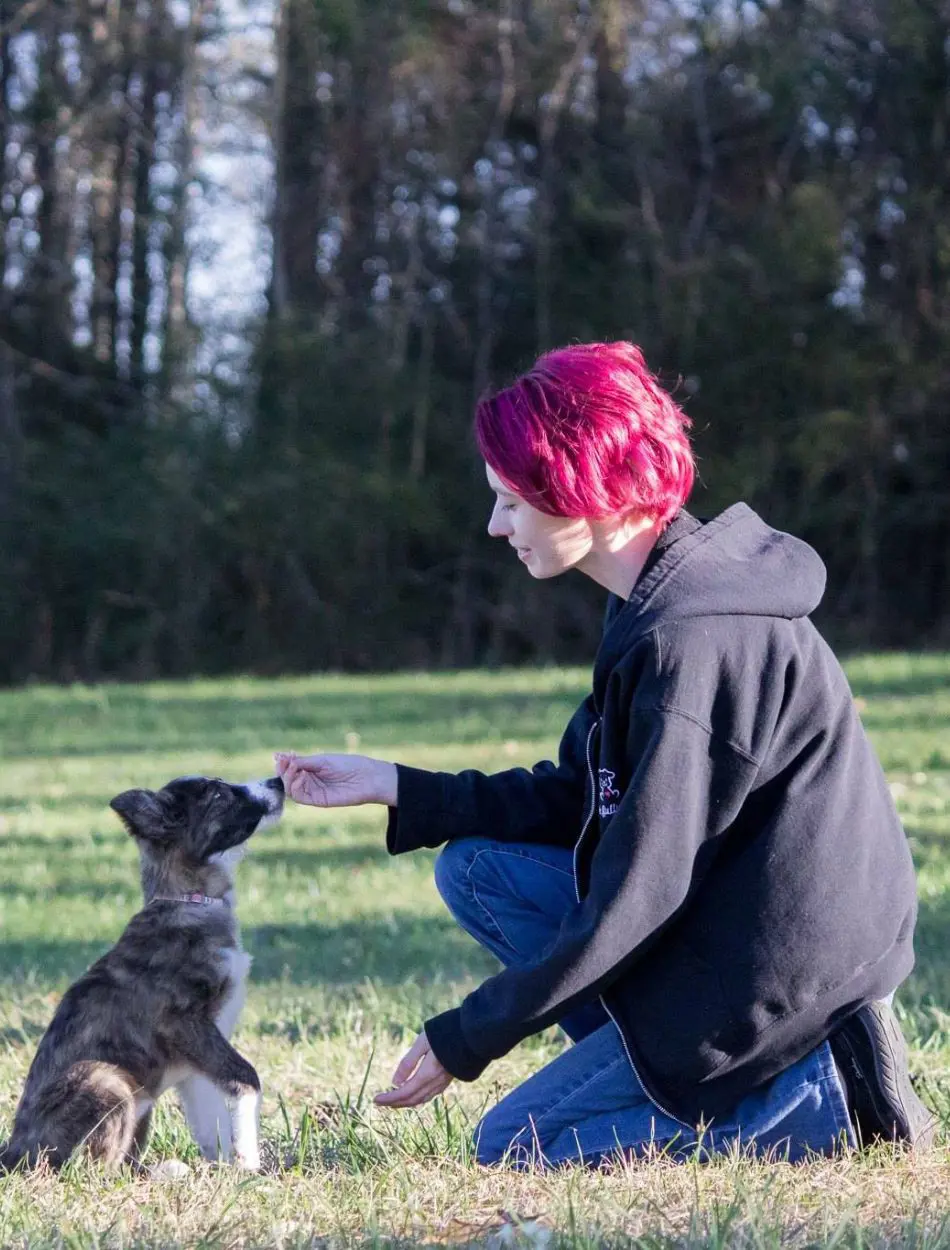White Cloud Fish Species Profile And Tank Mates
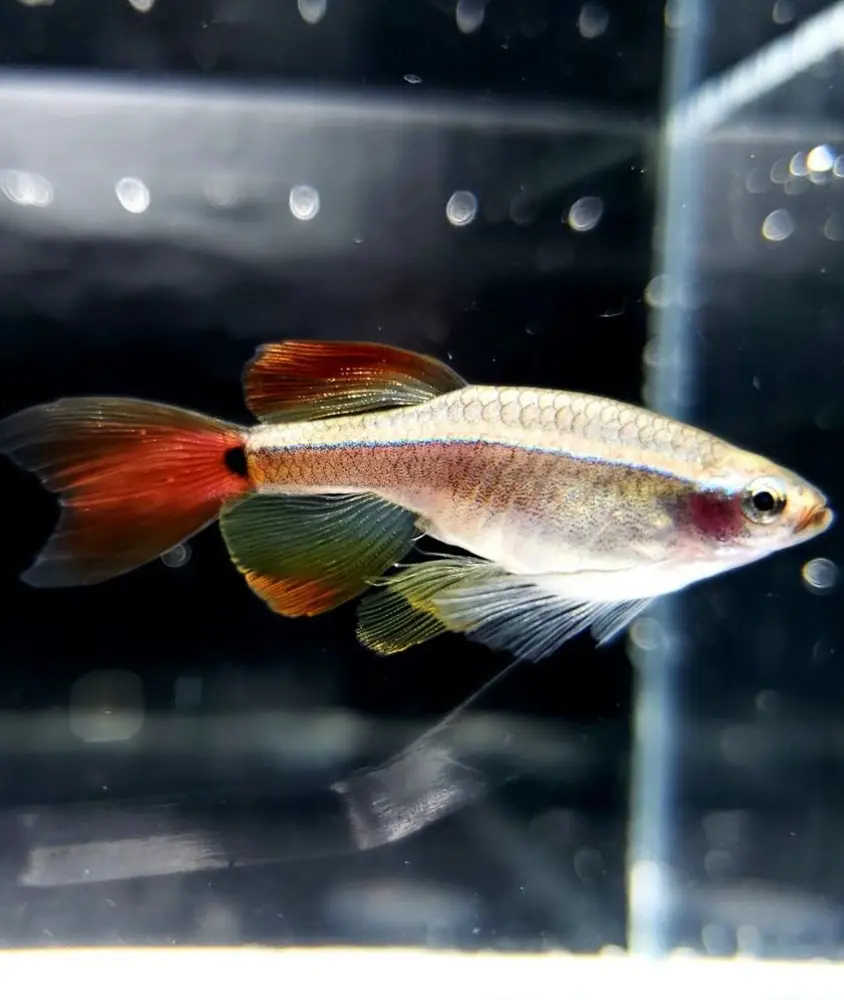
White cloud fish, also referred to as white cloud minnows, are colorful small fish. Besides their cheap cost and colorful varieties, these fish are social beings that can live in harmony with a variety of species.
The minnows initially gained popularity as a cheaper substitute for neon tetra. But over time, their appeal made them more than a second choice. Here's everything you need to know before getting a white cloud fish for your tank.
White Cloud Fish Origin
Also known as Tanichthys albonubes, the white cloud fish originated from the White Cloud Mountain region in Guangdong, China. This small, colorful fish thrives in cool, slow-moving streams and rivers with clear water, dense vegetation, and rocky substrates. Their natural habitat is characterized by moderate to high oxygen levels, and they prefer a temperature range of 16-22°C (60-72°F).
The white cloud minnow started becoming popular as a pet fish in the 1930s when it was discovered by Chinese Boy Scouts leader Tan Kan Fei. It gained immediate attention due to its hardiness, adaptability to varying water conditions, and vibrant colors. By the mid-20th century, the species became a staple in the aquarium trade, especially among beginners.
Appearance And Physical Traits
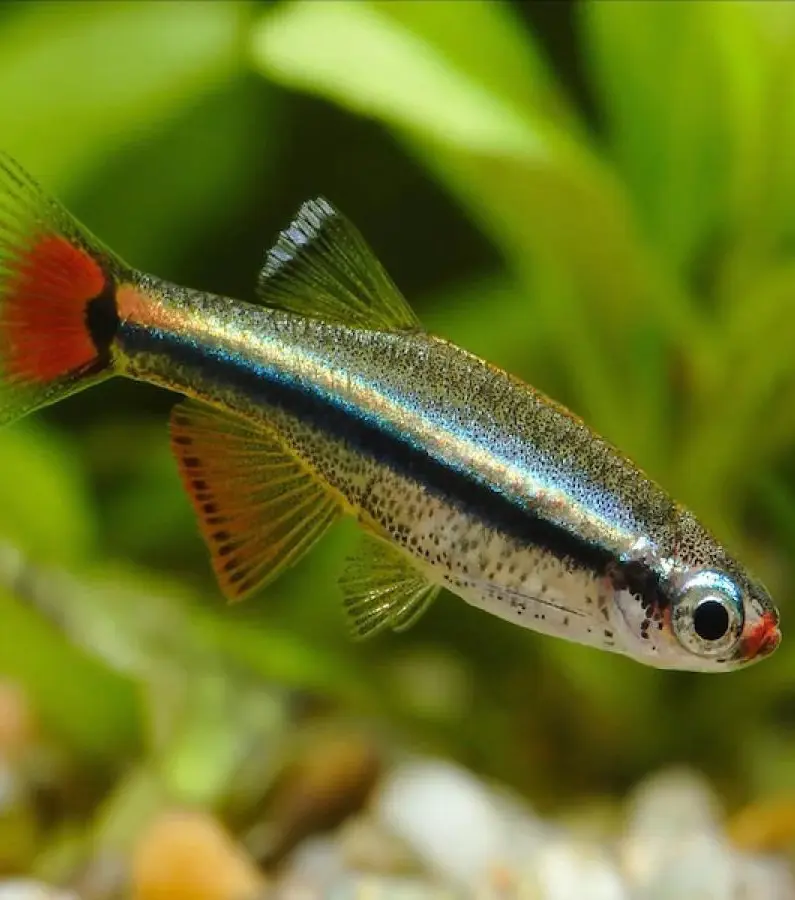
- Size: 1.5 to 2 inches (3.8 to 5 cm)
- Weight: Less than 1 gram
- Lifespan: 3 to 5 years
- Colors: Silver, Pale Gold, Iridescent Blue, Green, Red Accents
- Varieties: Standard, Golden, Long-Finned, Hong Kong, Albino
The slender white Cloud mountain fish normally features a silver to pale golden body. Their beauty is accented by a bold iridescent stripe running from the eye to the tail, which can shimmer in shades of blue, green, or red depending on the light. The fins are slightly elongated, often tinged with red or white.
This species exhibits a streamlined body that aids in swift swimming, with a slightly upturned mouth adapted for feeding near the water's surface. The fins are clear to semi-transparent, providing a subtle elegance.
Standard Diet And Feeding Schedule
As an omnivorous species, the white cloud mountain minnow fish consume both animal and plant matter. In the wild, they primarily feed on small insects, insect larvae, crustaceans, and zooplankton. Their natural diet is rich in protein to supports their growth, development, and vibrant coloration.
Additionally, these fish also eat plant material and algae, which provide essential vitamins and fibers for digestive health. This balanced diet provides them with a wide range of nutrients necessary for their overall well-being.
In captivity, the diet of a white cloud fish should replicate its natural food sources as closely as possible. Domesticated species can thrive on a varied diet that includes high-quality flake or pellet foods formulated for small tropical fish.
Their diet should also be supplemented with live or frozen foods such as brine shrimp, daphnia, or bloodworms to provide the necessary protein content. Including blanched vegetables like spinach or zucchini can offer vital vitamins and minerals.
Feeding Schedule:
- Frequency: Feed 2 to 3 times per day.
- Portion Size: Offer a small pinch of food that they can consume within 2-3 minutes per feeding. Overfeeding should be avoided as it can lead to water quality issues and health problems.
Feeding Tips:
- White cloud minnows are surface feeders, so feed them floating foods that remain on the water surface.
- Remove any uneaten food after feeding to prevent food waste and maintain water quality.
- These minnows have small mouths and can only eat small pieces of food. Offer small portions that they can consume within 2-3 minutes.
- Alternate between high-quality flake or micro-pellet foods and protein-rich options like brine shrimp, daphnia, or bloodworms. A varied diet helps meet their nutritional needs and enhances coloration.
White Cloud Mountain Fish Care
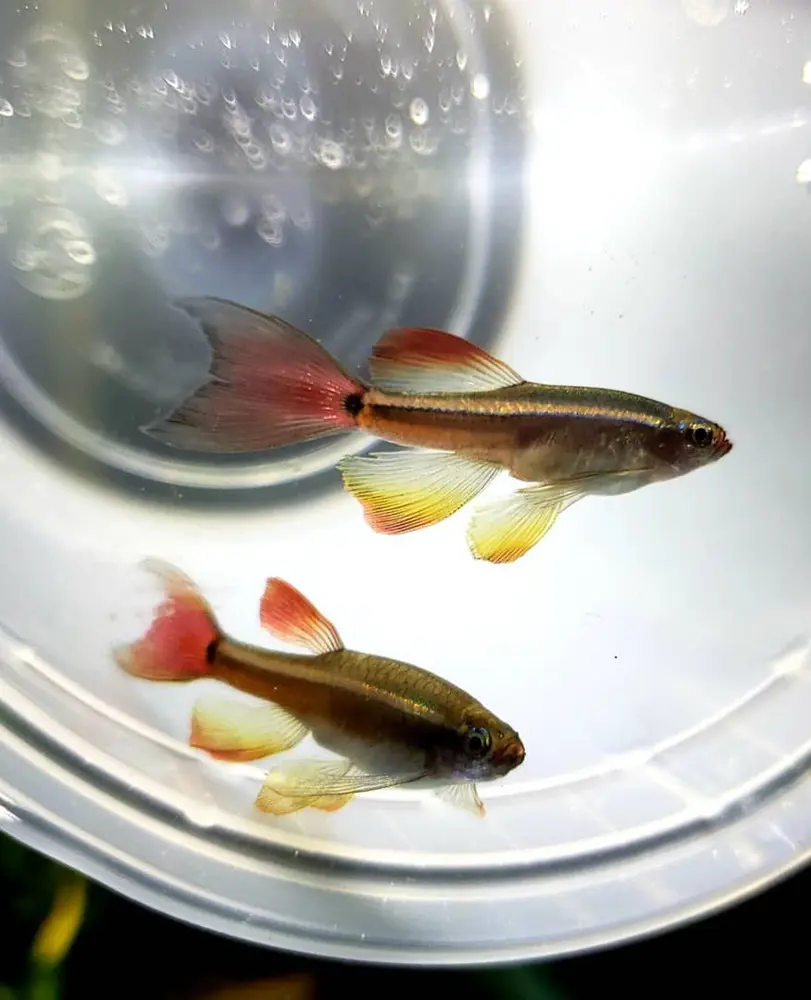
As a tank is an alien environment to the white cloud fish, they may become more sensitive or prone to illness without proper care. Caring for these marine creatures mostly involves maintaining a healthy tank with adequate water supply and health monitoring.
Here's a summarized approach to taking care for a white cloud mountain fish:
Tank Environment
The ideal setup begins with selecting an appropriately sized tank. A minimum of 10 gallons is recommended for a small school of 6-8 fish. But, a larger tank of 20 gallons or more provides ample swimming space and a more stable environment. White clouds are active swimmers that enjoy plenty of room to move, so a long, rectangular tank shape is preferable.
For the substrate, fine gravel or sand works well. A darker substrate enhances their colors and creates a more natural look. Also, put plenty of live or artificial plants, which provide hiding spots and reduce stress. Adding driftwood, rocks, and caves can help replicate their natural environment and create a visually appealing aquascape.
Additionally, regular tank cleaning is also vital for creating a healthy environment. Use a gravel vacuum to remove debris and detritus from the substrate.
Water Conditions
These fish grow best in cooler water temperatures, ideally between 64-72°F (18-22°C). These temperatures closely mimic their natural habitat in mountain streams. Maintaining a stable temperature within this range is crucial for their health and longevity.
Similarly, the white cloud fish needs acidic to neutral water, with a pH level ranging from 6.0 to 7.5. Soft to moderately hard water, with a hardness level of 5-19 dGH, is also ideal. Also, use a reliable filtration system to keep the water clean and free from toxins.
In addition to providing the best water conditions, regular water changes are also required. Perform 25-30% water changes weekly to remove waste and replenish essential minerals.
Health Care
Also a resilient species, these fish are vulnerable to a series of health issues. Mountain minnows are prone to common fish problems like fin rot, ich (white spot disease), and fungal infections. These conditions are often caused by poor water quality, stress, or overcrowding.
To monitor the health of your fish, observe them daily for signs of stress or illness. Healthy white clouds are active, display vibrant colors, and eat regularly. Meanwhile, unhealthy fish show symptoms like lethargy, loss of appetite, clamped fins, white spots, and unusual swimming behavior.
If you notice any signs of illness, immediately check water parameters and perform a water change to improve conditions. Make sure to immediately isolate the affected fish in a quarantine tank to prevent the spread of disease. Then, treat the illness with the appropriate care or medication.
White Mountain Minnow Tank Mates
White Cloud Mountain Minnows are social, schooling fish that prefer to hang out in groups. Keeping them with tank mates from other peaceful fish species promotes a more natural and stimulating environment It can even help reduce stress and encourage natural behaviors like active swimming.
Without companions, White Clouds may become shy, less active, or stressed. On the other hand, choosing the right tank mate is also vital for the breed's survival. These are some species that can serve as potential tank mates for the cloud fish.
Zebra Danio (Danio rerio)
Zebra danios are small, hardy fish known for their distinctive horizontal stripes. They are highly active and thrive in similar water conditions as White Cloud Mountain Minnows, preferring cooler temperatures around 64-75°F (18-24°C).
Danio and minnows are perfect companions as they are both peaceful and active. Both species are top to mid-level swimmers, providing dynamic movement throughout the aquarium.
Harlequin Rasboras
These are colorful fish with a distinctive black triangular patch on their bodies. As schooling fish, rasboras are well-suited to community tanks with cloud mountain minnows.
Their calm demeanor and similar size make Harlequin Rasboras excellent tank mates. They also add vibrant color and movement to the aquarium.
Cherry Barb
Cherry Barbs are small, brightly colored fish. They are peaceful and relatively shy, often schooling together for safety. They prefer water temperatures of 74-79°F (23-26°C), which is slightly warmer but still within the range compatible with white clouds.
Cherry Barbs prefer a planted tank, which also suits the environment that White Clouds enjoy. This includes sufficient hiding spots and toys to keep them busy.
Pygmy Corydoras
Scientifically called cordyras pygmaeus, these are bottom-dwelling catfish that are perfect for community tanks. Pygmies are often seen foraging the substrate for food. With a preferred temperature range of 72-79°F (22-26°C), they can easily coexist with the minnows.
Additionally, their bottom-dwelling habits complement the mid-to-top-level swimming of white clouds. They also help maintain a clean tank environment by scavenging leftover food.
Bristlenose Pleco (Ancistrus spp.)
Bristlenose Plecos are small, peaceful algae-eating catfish that stay relatively small. They prefer cooler water temperatures around 60-77°F (16-25°C).
Their calm demeanor and bottom-dwelling nature mean they do not compete for space or food with mid-level swimmers like white clouds. These fish are also excellent tank cleaners, feeding on algae and detritus.
Glowlight Tetra
This Tetra variety features small fish with a glowing orange stripe along their body. They are known for their calm demeanor and compatibility with other non-aggressive species.
Their small size and active nature create a lively tank environment without overcrowding. Overall, they add a splash of color and a unique personality to the tank.
Dwarf Gourami
Also called Trichogaster lalius, the dwarf gourami is a freshwater fish known for its vibrant blue and red hues and calm demeanor. Native to the slow-moving waters of India, they are popular in home aquariums due to their striking appearance and relatively easy care requirements.
Dwarf Gouramis typically grow up to 3.5 inches in length and prefer water temperatures between 72-82°F (22-28°C). Their small size makes them excellent neighbors for the minnows. Both species are peaceful and non-aggressive, which helps maintain a tranquil aquarium environment.
Breeding White Cloud Mountain Fish
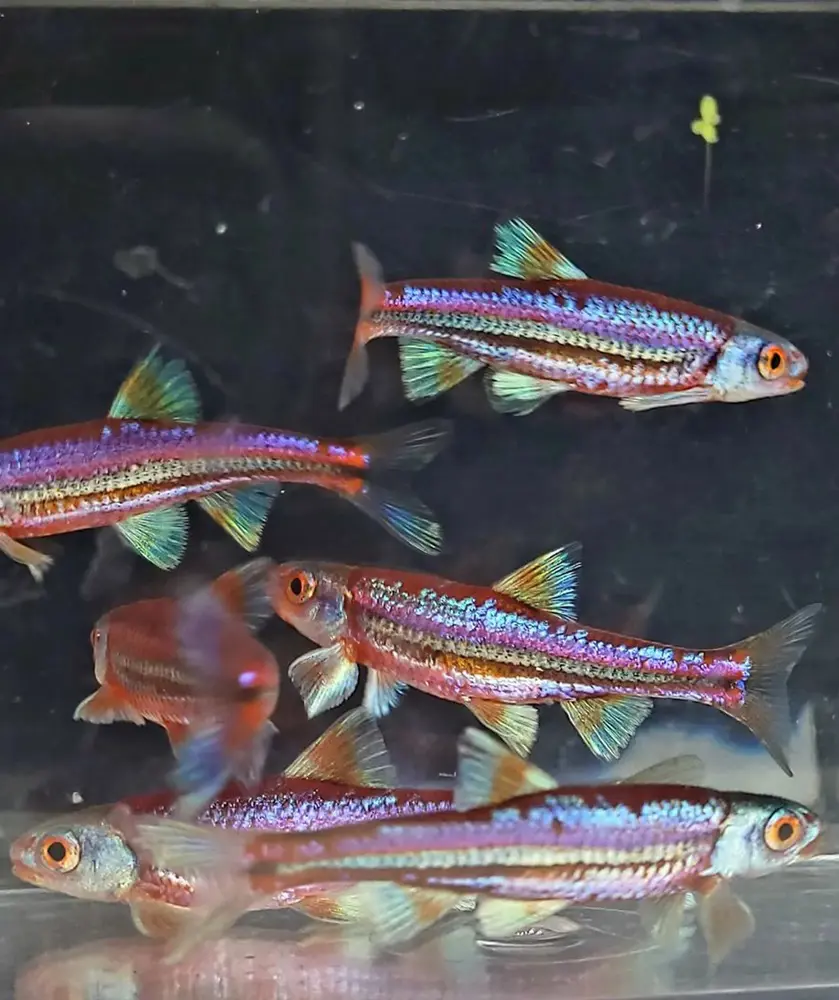
White cloud minnows are relatively easy to breed, compared to other housepets. As the breeding process doesn't require extensive preparation, they are suitable for both beginners and experienced aquarists.
1. Prepare a Breeding Tank
Set up a separate tank of at least 10 gallons to prevent other fish from eating the eggs. Use fine-leaved plants like Java moss or spawning mops, which provide ideal surfaces for the eggs to attach.
Keep the water temperature slightly warmer, around 68-72°F (20-22°C), and maintain a pH of 6.5-7.0. Provide gentle filtration to keep the water clean without creating strong currents.
2. Select Healthy Breeding Pairs
Choose healthy adult minnows, ideally with bright colors and active behavior. You can identify males by their slimmer bodies and brighter colors, especially around the fins. Females are generally fuller-bodied and less colorful.
Select 2-3 males for every female to encourage competitive breeding behavior.
3. Condition the Breeding Pair
Feed the selected breeding pair a varied diet rich in protein, including live or frozen foods like brine shrimp and bloodworms, for a week or two before breeding. This conditioning enhances their health and stimulates spawning.
4. Induce Spawning
Introduce the conditioned pair into the breeding tank. Maintain optimal water conditions and a slightly warmer temperature to encourage spawning.
Spawning usually occurs in the early morning. The male will chase the female around, nudging her to lay eggs among the plants or spawning mops.
5. Remove Adults After Spawning
After spawning, the female will scatter her eggs among the plants, and the male will fertilize them. Once you observe the eggs, promptly remove the adult fish to prevent them from eating the eggs.
The eggs will hatch in 36 to 48 hours, depending on the water temperature.
6. Care for the Fry
Once the eggs hatch, the fry will feed on their yolk sacs for the first few days. After they become free-swimming, feed them infusoria or liquid fry food until they are large enough to consume crushed flakes or micro-pellets.
Gradually introduce them to larger foods as they grow, maintaining water quality with regular, small water changes.
Recent posts
Fish
Why Is My Fish Tank Cloudy?
Cloudy fish tanks can be frustrating for any aquarium owner. Especially if one has put in the necessary effort to accomplish a beautiful underwater setting. Whether you are an inexperienced aquarium holder or one of the pros, cloudy water may be the ...
20 Long Freshwater Fish For Aquarium
Having a range of long, gorgeous fish in your freshwater aquarium can make it an immensely fulfilling experience. Choosing the right fish is the first step to an exciting freshwater aquarium, and long freshwater fish are among the best options. ...
17 Cichlid Tank Mates For Your Aquarium
Cichlids are one of the diverse and captivating freshwater fish that are known for their vibrant colors. They are found in tropical America, mainland Africa, Madagascar, and southern Asia. These freshwater fish have elongated streamlined bodies...
20 Aggressive Fish Tank Species
When setting up an aquarium, the right choice of fish species is indispensable since some fish have aggressive natures, which could breed conflict in a community tank. These fish are known to be territorial and most of them require special care ...
Ramshorn Snails Care Guide And Tank Mates
Ramshorn snails, familiar to the family Planorbidae, are an absorbing group of freshwater gastropods. They thrive in a variety of environments from clean to moderately polluted waters. Despite being considered a pest snail by many, the ramshorn...
Scarlet Badis Fish Profile And Tank Mates
Scarlet Badis are among the most fascinating and rewarding species to keep in a home aquarium. Especially for the aquarists who will go the extra mile to suit their needs regarding proper care and raising. In terms of their bright coloring, intriguin...

